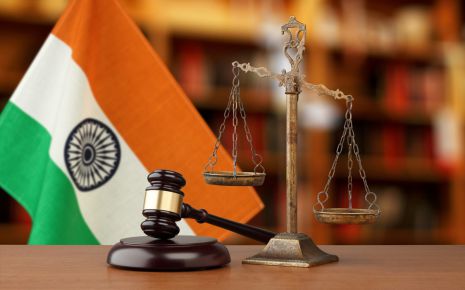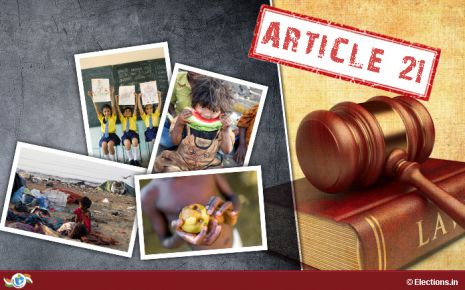Analyzing the Use of Handcuffs on Accused Persons by Police
The history of handcuffs stretches back centuries, evolving from simple
shackles to the sophisticated restraint devices we know today. Their primary
purpose has always been to prevent escape and ensure compliance, reflecting the
evolution of law enforcement practices and societal attitudes towards punishment
and control. In the modern era, handcuffs are typically crafted from metal,
prioritizing both lightness and security. Double-lock mechanisms are often
incorporated to prevent over-tightening and minimize the risk of injury.
Handcuffing apprehended individuals enhances officer and public safety by incapacitating potentially volatile individuals, preventing potential harm. It minimizes the likelihood of escape, facilitating secure transport and detention of suspects. Handcuffs facilitate control in tense situations, improving law enforcement's ability to manage volatile encounters.
However, the practice presents notable drawbacks. Handcuffing can be perceived as humiliating and inhumane, undermining the individual's dignity. There is a risk of misuse, with unwarranted or excessive use fuelling accusations of police brutality and power abuse. Improper handcuffing techniques can cause physical harm, including nerve damage and circulatory issues, raising concerns about the well-being of the apprehended individual.
The use of handcuffs by Indian police has been under intense judicial scrutiny to safeguard individual rights during arrests and detentions. The Supreme Court, in its landmark judgments, has established clear guidelines for handcuffing, prioritizing both the protection of human dignity and the lawful execution of police duty.
The future of policing and handcuff use is being reshaped by technological advancements. Smart handcuffs, equipped with sensors to monitor vital signs and ensure proper application, are being developed, promising increased safety and accountability. Furthermore, body-worn cameras offer a valuable resource for documenting encounters and providing objective evidence in cases where the use of handcuffs is disputed.
Police handcuff usage is strictly regulated by national and international laws, alongside departmental guidelines. In the United States, the Fourth Amendment, safeguarding against unreasonable searches and seizures, significantly influences handcuff use standards. Supreme Court rulings, notably Terry v. Ohio and Graham v. Connor, emphasize that handcuff use must be judged on a case-by-case basis, considering the specific circumstances.
Generally, officers are authorized to use handcuffs when probable cause exists to believe an individual has committed a crime, poses a threat to officers or the public, or is likely to flee. However, handcuff use must be proportionate to the situation and essential for achieving a legitimate law enforcement goal. Excessive or improper use can result in legal challenges and accusations of excessive force or civil rights violations.
Handcuffs, as it turns out, are quite an important tool for police officers in keeping themselves safe and controlling situations where they might lose the upper hand. In these handcuffs allow law enforcers to secure persons who are either violent or uncooperative as well as those trying to escape; this makes it easier for the officers not to injure themselves while containing such individuals. Often just seeing handcuffs serves as a warning because typically compliance is more likely when people see that the situation is getting serious with the introduction of handcuffs.
Nevertheless, handcuffs can be quite a hassle. It's a matter of finesse: officers should be adept at securing and freeing the restraints promptly and harmlessly. This involves ensuring that injuries are kept at bay by not going overboard with the tightness or duration; handcuffs left on for too long or fastened too tightly may easily inflict physical harm such as damage to nerves or circulation. Given these eventualities, some police departments have introduced periodic checkups on handcuffs coupled with basic medical education in symptom recognition as an effort to mitigate these risks.
Handcuff use can significantly impact public perception of law enforcement and community relations. The visible restraint can be unsettling or alarming to bystanders, potentially fueling perceptions of excessive force or aggression, especially in communities already facing strained relations with the police.
Transparency, accountability, and clear communication about the reasons for handcuff use are crucial to build trust and legitimacy. Engaging with the community through dialogue and addressing concerns about handcuff use and broader police conduct is essential. By involving community members in discussions about policing practices and accountability mechanisms, law enforcement can foster a more collaborative and understanding relationship with the public they serve.
Community engagement and dialogue are crucial for addressing concerns regarding handcuff use and broader police conduct issues. Engaging community members in discussions on policing practices and accountability frameworks enables law enforcement agencies to cultivate a more collaborative and empathetic relationship with the public they serve.
The Nelson Mandela Rules, also known as the United Nations Standard Minimum Rules for the Treatment of Prisoners, were unanimously adopted by the United Nations General Assembly in 2015. Rule 47 (1) of the Mandela Rules prohibits the use of chains, irons, or other inherently degrading or painful restraint devices. Rule 47 (2) allows for the use of other restraint instruments as authorized by law for precautionary measures during prisoner transfers. Prison authorities may use alternative restraint methods only if other measures to prevent harm to others or property have been unsuccessful.
In India, in addition to the instructions of the Supreme Court, prisons also follow the Prisons Act of 1894, which has been modified over time. The Act permits the use of fetters if the rules established by the respective State government allow it, under section 46(7). This punishment is applicable for offenses committed within the prison, as outlined in section 45, which includes assault, disorderly behavior, intentional damage to property, and feigning illness, among other things.
Other prescribed punishments include cellular confinement, whipping, and hard labor. However, female prisoners and civil prisoners are exempt from the punishment of confinement in fetters.
Furthermore, according to section 56, the Jail Superintendent may confine a prisoner in irons for safe custody, subject to the Rules of the state government. Section 57, which pertains to confinement under sentence of transportation, is now obsolete as it was a penalty from colonial times when convicts were sent away to distant lands, outside of society, usually to the colonies of imperial powers. Such punishments are no longer imposed by Indian courts.
Under Section 58 of The Prisons Act, 1894, the Jailer is prohibited from shackling or restraining prisoners using mechanical devices without authorization. However, exceptions are made in cases of pressing necessity, in which instances immediate notification must be provided to the Superintendent.
Section 46 of the Code of Criminal Procedure (CrPC), 1973 permits the application of reasonable force for effectuating an arrest or precluding the evasion of an indicted individual. The employment of handcuffs is sanctioned under this provision, with police officers being empowered to utilize them at their discretion.
The Supreme Court of India set strict guidelines for police handcuff use in the landmark case of Prem Shankar Shukla v. Delhi Administration (1980). Handcuffing, according to the Court, should not be a standard practice and must be supported by specific reasons, including a credible threat of escape or violence. The decision to handcuff undergoes judicial review, with police required to provide justifications to a magistrate for approval. The Court, prioritizing the preservation of human dignity, deemed handcuffing intrinsically demeaning and urged its limited use to prevent degrading treatment.
In Citizen for Democracy v. State of Assam (1995), the Indian Supreme Court imposed stringent regulations on the usage of handcuffs. The Court categorically prohibited the use of handcuffs on detainees except in situations where there is an imminent threat of violence or escape. The Court further directed that any exceptions to this rule must be reported to senior police officials and subjected to regular scrutiny for accountability purposes.
The landmark case of Sunil Batra v. Delhi Administration (1978) established that police use of handcuffs must be justified. The court ruled that handcuffs should never be used as a form of punishment and should be avoided in cases involving non-violent offenses, women, and juveniles.
Despite the Supreme Court's established guidelines on handcuffing, their application remains uneven. This disparity arises from multiple factors, such as limited knowledge among law enforcement officers, inadequate training in proper handcuffing techniques, misapprehension of handcuffing as necessary to prevent escape and pressure to preserve public safety. Inappropriate justifications and insufficient documentation of handcuffing incidents have led to infringements upon the court's directives.
The National Human Rights Commission (NHRC) and State Human Rights Commissions are crucial in monitoring and enforcing compliance with the Supreme Court's guidelines. They have the authority to investigate complaints of handcuff misuse and recommend corrective actions, including compensation and disciplinary measures against officers who violate the guidelines.
Conclusion:
In India, the judiciary has consistently emphasized the paramount importance of protecting human dignity and ensuring that law enforcement practices align with constitutional rights. The Supreme Court has established strict guidelines limiting the use of handcuffs to only exceptional circumstances, mandating proper documentation and judicial oversight.
Despite these clear guidelines, their effective implementation remains a significant challenge. To ensure adherence to the principles set forth by the judiciary, continuous training for police personnel, heightened awareness of human rights, and robust accountability mechanisms are essential. The vigilance of human rights bodies and active engagement of civil society play crucial roles in holding law enforcement agencies accountable and upholding the rule of law.
Written By: Md.Imran Wahab, IPS, IGP, Provisioning, West Bengal
Email: [email protected], Ph no: 9836576565
Handcuffing apprehended individuals enhances officer and public safety by incapacitating potentially volatile individuals, preventing potential harm. It minimizes the likelihood of escape, facilitating secure transport and detention of suspects. Handcuffs facilitate control in tense situations, improving law enforcement's ability to manage volatile encounters.
However, the practice presents notable drawbacks. Handcuffing can be perceived as humiliating and inhumane, undermining the individual's dignity. There is a risk of misuse, with unwarranted or excessive use fuelling accusations of police brutality and power abuse. Improper handcuffing techniques can cause physical harm, including nerve damage and circulatory issues, raising concerns about the well-being of the apprehended individual.
The use of handcuffs by Indian police has been under intense judicial scrutiny to safeguard individual rights during arrests and detentions. The Supreme Court, in its landmark judgments, has established clear guidelines for handcuffing, prioritizing both the protection of human dignity and the lawful execution of police duty.
The future of policing and handcuff use is being reshaped by technological advancements. Smart handcuffs, equipped with sensors to monitor vital signs and ensure proper application, are being developed, promising increased safety and accountability. Furthermore, body-worn cameras offer a valuable resource for documenting encounters and providing objective evidence in cases where the use of handcuffs is disputed.
Police handcuff usage is strictly regulated by national and international laws, alongside departmental guidelines. In the United States, the Fourth Amendment, safeguarding against unreasonable searches and seizures, significantly influences handcuff use standards. Supreme Court rulings, notably Terry v. Ohio and Graham v. Connor, emphasize that handcuff use must be judged on a case-by-case basis, considering the specific circumstances.
Generally, officers are authorized to use handcuffs when probable cause exists to believe an individual has committed a crime, poses a threat to officers or the public, or is likely to flee. However, handcuff use must be proportionate to the situation and essential for achieving a legitimate law enforcement goal. Excessive or improper use can result in legal challenges and accusations of excessive force or civil rights violations.
Handcuffs, as it turns out, are quite an important tool for police officers in keeping themselves safe and controlling situations where they might lose the upper hand. In these handcuffs allow law enforcers to secure persons who are either violent or uncooperative as well as those trying to escape; this makes it easier for the officers not to injure themselves while containing such individuals. Often just seeing handcuffs serves as a warning because typically compliance is more likely when people see that the situation is getting serious with the introduction of handcuffs.
Nevertheless, handcuffs can be quite a hassle. It's a matter of finesse: officers should be adept at securing and freeing the restraints promptly and harmlessly. This involves ensuring that injuries are kept at bay by not going overboard with the tightness or duration; handcuffs left on for too long or fastened too tightly may easily inflict physical harm such as damage to nerves or circulation. Given these eventualities, some police departments have introduced periodic checkups on handcuffs coupled with basic medical education in symptom recognition as an effort to mitigate these risks.
Handcuff use can significantly impact public perception of law enforcement and community relations. The visible restraint can be unsettling or alarming to bystanders, potentially fueling perceptions of excessive force or aggression, especially in communities already facing strained relations with the police.
Transparency, accountability, and clear communication about the reasons for handcuff use are crucial to build trust and legitimacy. Engaging with the community through dialogue and addressing concerns about handcuff use and broader police conduct is essential. By involving community members in discussions about policing practices and accountability mechanisms, law enforcement can foster a more collaborative and understanding relationship with the public they serve.
Community engagement and dialogue are crucial for addressing concerns regarding handcuff use and broader police conduct issues. Engaging community members in discussions on policing practices and accountability frameworks enables law enforcement agencies to cultivate a more collaborative and empathetic relationship with the public they serve.
The Nelson Mandela Rules, also known as the United Nations Standard Minimum Rules for the Treatment of Prisoners, were unanimously adopted by the United Nations General Assembly in 2015. Rule 47 (1) of the Mandela Rules prohibits the use of chains, irons, or other inherently degrading or painful restraint devices. Rule 47 (2) allows for the use of other restraint instruments as authorized by law for precautionary measures during prisoner transfers. Prison authorities may use alternative restraint methods only if other measures to prevent harm to others or property have been unsuccessful.
In India, in addition to the instructions of the Supreme Court, prisons also follow the Prisons Act of 1894, which has been modified over time. The Act permits the use of fetters if the rules established by the respective State government allow it, under section 46(7). This punishment is applicable for offenses committed within the prison, as outlined in section 45, which includes assault, disorderly behavior, intentional damage to property, and feigning illness, among other things.
Other prescribed punishments include cellular confinement, whipping, and hard labor. However, female prisoners and civil prisoners are exempt from the punishment of confinement in fetters.
Furthermore, according to section 56, the Jail Superintendent may confine a prisoner in irons for safe custody, subject to the Rules of the state government. Section 57, which pertains to confinement under sentence of transportation, is now obsolete as it was a penalty from colonial times when convicts were sent away to distant lands, outside of society, usually to the colonies of imperial powers. Such punishments are no longer imposed by Indian courts.
Under Section 58 of The Prisons Act, 1894, the Jailer is prohibited from shackling or restraining prisoners using mechanical devices without authorization. However, exceptions are made in cases of pressing necessity, in which instances immediate notification must be provided to the Superintendent.
Section 46 of the Code of Criminal Procedure (CrPC), 1973 permits the application of reasonable force for effectuating an arrest or precluding the evasion of an indicted individual. The employment of handcuffs is sanctioned under this provision, with police officers being empowered to utilize them at their discretion.
The Supreme Court of India set strict guidelines for police handcuff use in the landmark case of Prem Shankar Shukla v. Delhi Administration (1980). Handcuffing, according to the Court, should not be a standard practice and must be supported by specific reasons, including a credible threat of escape or violence. The decision to handcuff undergoes judicial review, with police required to provide justifications to a magistrate for approval. The Court, prioritizing the preservation of human dignity, deemed handcuffing intrinsically demeaning and urged its limited use to prevent degrading treatment.
In Citizen for Democracy v. State of Assam (1995), the Indian Supreme Court imposed stringent regulations on the usage of handcuffs. The Court categorically prohibited the use of handcuffs on detainees except in situations where there is an imminent threat of violence or escape. The Court further directed that any exceptions to this rule must be reported to senior police officials and subjected to regular scrutiny for accountability purposes.
The landmark case of Sunil Batra v. Delhi Administration (1978) established that police use of handcuffs must be justified. The court ruled that handcuffs should never be used as a form of punishment and should be avoided in cases involving non-violent offenses, women, and juveniles.
Despite the Supreme Court's established guidelines on handcuffing, their application remains uneven. This disparity arises from multiple factors, such as limited knowledge among law enforcement officers, inadequate training in proper handcuffing techniques, misapprehension of handcuffing as necessary to prevent escape and pressure to preserve public safety. Inappropriate justifications and insufficient documentation of handcuffing incidents have led to infringements upon the court's directives.
The National Human Rights Commission (NHRC) and State Human Rights Commissions are crucial in monitoring and enforcing compliance with the Supreme Court's guidelines. They have the authority to investigate complaints of handcuff misuse and recommend corrective actions, including compensation and disciplinary measures against officers who violate the guidelines.
Conclusion:
In India, the judiciary has consistently emphasized the paramount importance of protecting human dignity and ensuring that law enforcement practices align with constitutional rights. The Supreme Court has established strict guidelines limiting the use of handcuffs to only exceptional circumstances, mandating proper documentation and judicial oversight.
Despite these clear guidelines, their effective implementation remains a significant challenge. To ensure adherence to the principles set forth by the judiciary, continuous training for police personnel, heightened awareness of human rights, and robust accountability mechanisms are essential. The vigilance of human rights bodies and active engagement of civil society play crucial roles in holding law enforcement agencies accountable and upholding the rule of law.
Written By: Md.Imran Wahab, IPS, IGP, Provisioning, West Bengal
Email: [email protected], Ph no: 9836576565
Law Article in India
Legal Question & Answers
Lawyers in India - Search By City
LawArticles
How To File For Mutual Divorce In Delhi

How To File For Mutual Divorce In Delhi Mutual Consent Divorce is the Simplest Way to Obtain a D...
Increased Age For Girls Marriage

It is hoped that the Prohibition of Child Marriage (Amendment) Bill, 2021, which intends to inc...
Facade of Social Media

One may very easily get absorbed in the lives of others as one scrolls through a Facebook news ...
Section 482 CrPc - Quashing Of FIR: Guid...

The Inherent power under Section 482 in The Code Of Criminal Procedure, 1973 (37th Chapter of t...
The Uniform Civil Code (UCC) in India: A...

The Uniform Civil Code (UCC) is a concept that proposes the unification of personal laws across...
Role Of Artificial Intelligence In Legal...

Artificial intelligence (AI) is revolutionizing various sectors of the economy, and the legal i...








Please Drop Your Comments